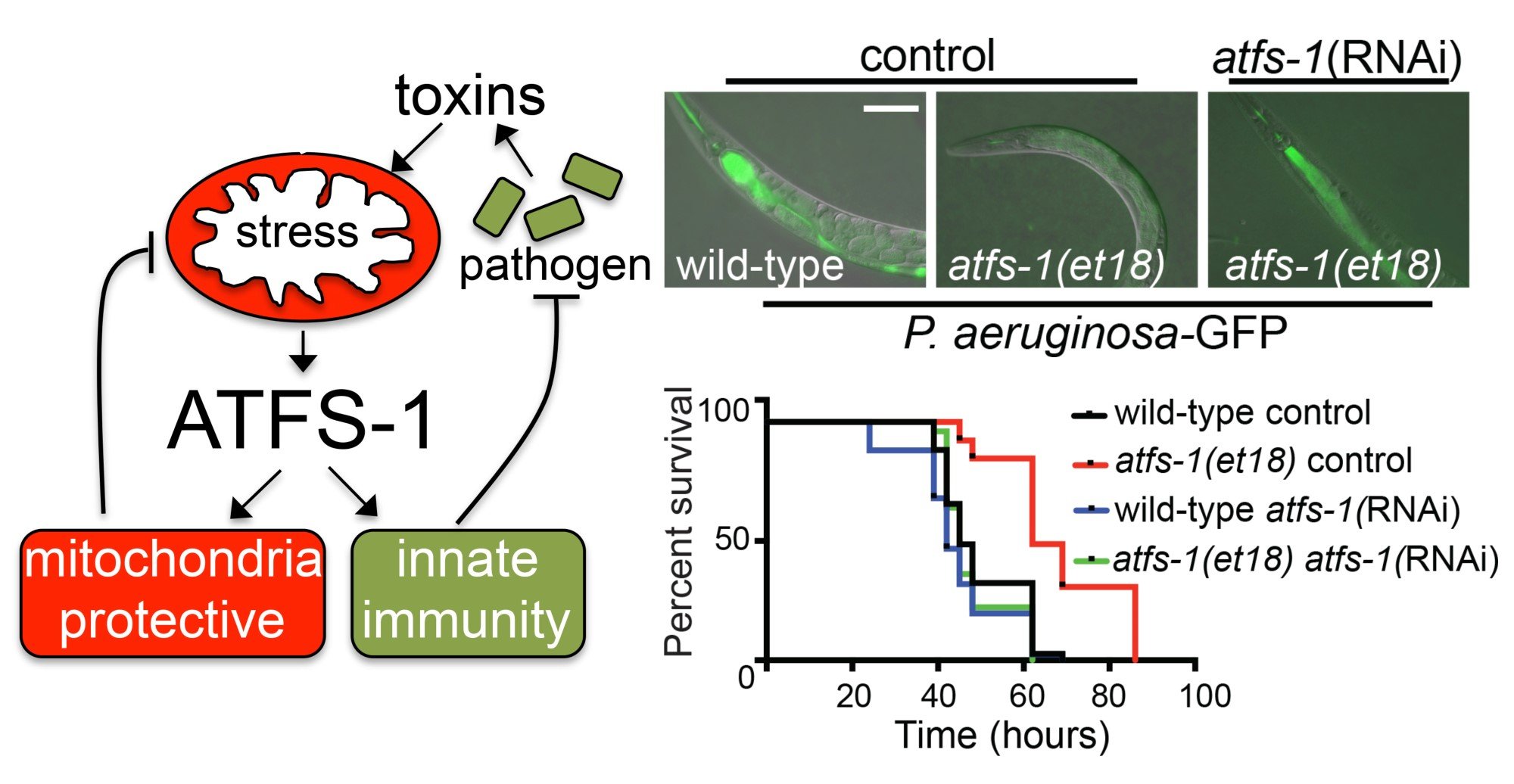The UPRmt and innate immunity.
In addition to regulating a mitochondrial-protective transcriptional program, the UPRmt also includes a number of anti-bacterial innate immune and xenobiotic detoxifying genes. But, why would a cell couple a mitochondrial protective and innate immune response via a single transcription factor that responds to mitochondrial dysfunction? We recently proposed a model where the UPRmt serves as an innate immune response capable of detecting pathogenic bacteria and activating an anti-bacterial response1,2. Interestingly, most commercially available mitochondrial toxins are generated by bacteria (antimycin, oligomycin, etc). And, a number of pathogenic bacteria such as Pseudomonas aeruginosa produce mitochondrial toxins as virulence factors (cyanide). Thus, we hypothesize that eukaryotes can simply monitor mitochondrial function to differentiate certain pathogenic bacteria from commensal species in microbe-rich environments such as the intestine or skin rather than evolving means to detect specific toxic bacteria1,2. Thus, the UPRmt responds to bacteria that perturb mitochondrial function by inducing genes to insure mitochondrial integrity and genes to eliminate the pathogen. We are currently further exploring this model in C. elegans and mammalian models.

References:
1Pellegrino MW, Nargund AN, Kirienko NV, Gillis R, Fiorese CJ, Haynes CM. (2014) Mitochondrial UPR-regulated innate immunity provides resistance to pathogen infection. Nature. Dec 18;516(7531): 414-417. PMID: 25274306
2Pellegrino MW, Haynes CM. (2015) Mitophagy and the UPRmt in neurodegeneration and bacterial infection. BMC Biology. April 3;13(1): 22. doi: 10.1186/s12915-015-0129-1. PMID: 25857750
